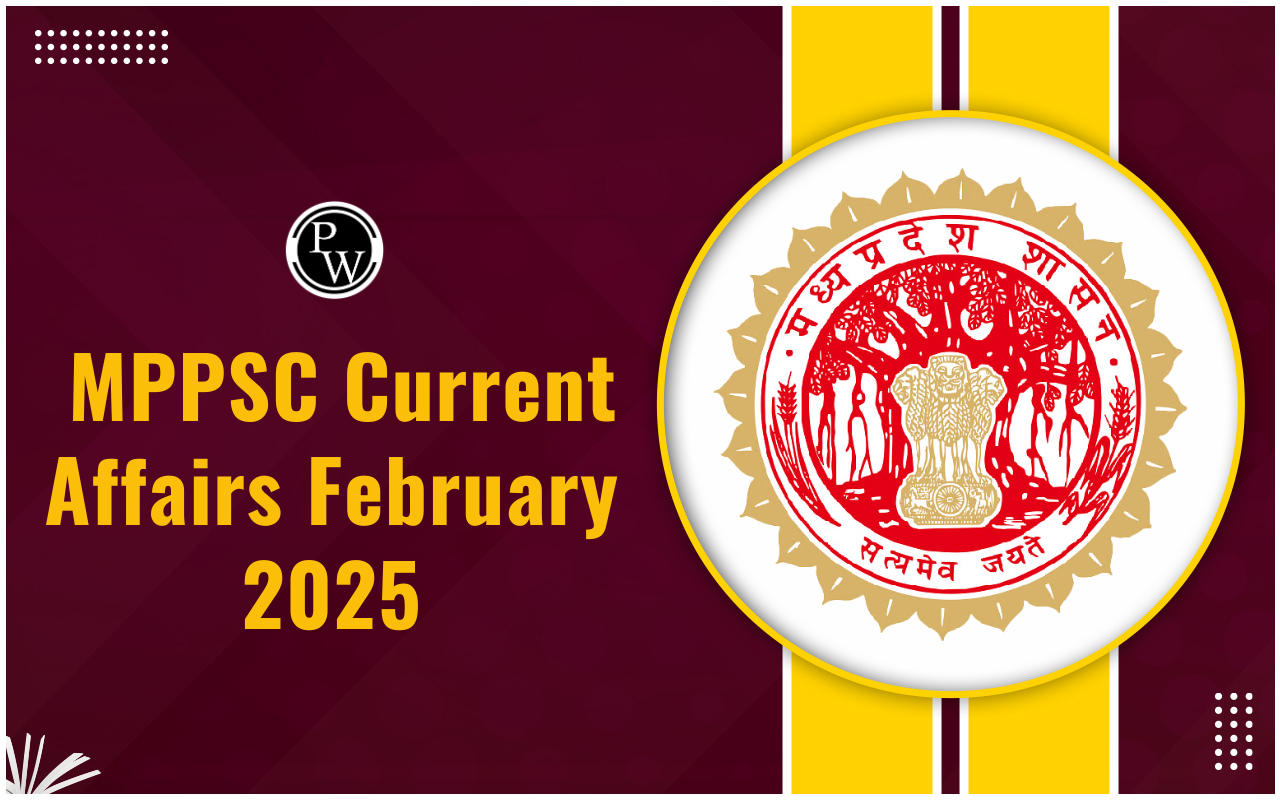
Gupta Empire: The Gupta Empire was a powerful dynasty that ruled over northeastern India from the 4th to the 6th century CE. They controlled large parts of northern, central, and western India, with their capital in Magadha, which is now part of Bihar.
At its peak, the Gupta period was considered the classical age of India, where many aspects of Indian culture flourished. However, modern research has questioned some of these traditional beliefs. Administratively, the Gupta kingdom was organized into provinces, which were further divided into smaller units called pradeshas or vishayas. These provinces were governed by high imperial officers or members of the royal family, indicating a decentralized system of authority. The first ruler of the Gupta Empire was Chandra Gupta I, who married into the Licchavi clan, solidifying his rule. His son, Samudra Gupta, is celebrated for expanding the empire through conquest, particularly in northern and eastern India. His campaigns brought regions under direct Gupta control, diminishing the power of local rulers. Chandra Gupta II, also known as Vikramaditya, extended the empire to Ujjain but is remembered more for his cultural and intellectual achievements rather than military conquests. However, as the Gupta Empire progressed, subsequent rulers faced challenges, including invasions by the Hunas, which led to the gradual decline of the dynasty. By the mid-6th century, the Gupta Empire had shrunk considerably, eventually coming to an end. Despite its demise, the Gupta period left a lasting legacy in Indian history, particularly in the fields of literature, art, architecture, and philosophy.Origin of the Gupta Empire
The Gupta Empire emerged around 275 AD, rising to power on the remnants of the Kushan Empire in North India. This new dynasty brought together a significant portion of the territories once controlled by both the Kushans in the north and the Satavahanas in Deccan and South India. Before the Guptas, two major powers, the Satavahanas and the Kushans, dominated different parts of India. The Satavahanas held sway in the Deccan and southern regions, while the Kushans ruled over the north. However, by around 230 AD, the Kushan rule in the north began to wane, and another group called the Murundas, believed to be related to the Kushans, briefly took control of central India for about 25 years. Then, around 275 AD, the Gupta Empire emerged, filling the political vacuum left by the declining Kushans. They not only reclaimed the former Kushan territories but also expanded their rule over significant portions of the Satavahana domains. For over a century, the Gupta Empire brought political unity to North India, establishing their dominance over the region.History of Gupta Empire
Chandragupta-I, ruling from approximately 319 to 330/335 CE, is considered the primary architect of the Gupta dynasty's rise to prominence. He held the prestigious title of "Maharajadhiraj" and expanded his dominion over regions encompassing Eastern Uttar Pradesh, Jharkhand, and South Bihar, including Saketa and Prayaga. Chandragupta-I's reign marked the establishment of the Gupta Samvat, or era, around 319-320 CE. This era became a significant chronological reference point in Indian history. Notably, during his rule, gold coins featuring the portraits of both Chandragupta-I and his consort, Kumardevi, were minted. These coins, known as Kumardevi Coins, symbolized the matrimonial alliance between Chandragupta-I and Kumardevi, a Licchavi princess. This union not only strengthened Chandragupta-I's political position but also extended Gupta influence into the North Bihar region, including areas that are now part of modern-day Nepal.Material Advantages of the Gupta Empire
During the Gupta Empire, they enjoyed several material advantages that helped them flourish. One significant advantage was the fertile land of Madhya Desha, covering regions like Bihar and Uttar Pradesh, which served as the heartland of their operations. This fertile land provided ample resources for agriculture and sustenance. The Gupta Empire tapped into the iron ore reserves located in central India and South Bihar. They likely exploited these resources to fuel their metallurgical industries, contributing to their economic prosperity and military strength. Geographical proximity to North India facilitated trade, particularly in silk, with the Eastern Roman Empire, also known as the Byzantine Empire. This trade route provided the Guptas with access to valuable goods and wealth, enhancing their economic standing. Originally, the Gupta Empire centered its operations in Uttar Pradesh and Bihar. Uttar Pradesh, with its center of power at Prayag (modern-day Allahabad), served as a strategic hub for governance and administration. From this base, the Guptas extended their rule over Anuganga (the middle Gangetic basin), Magadha, Saketa (Ayodhya, Uttar Pradesh), and other regions. These favorable factors, including fertile lands, access to resources like iron ore, and strategic trade routes, contributed to the strength and expansion of the Gupta Empire during its heyday.Gupta Empire Rulers
The Gupta Empire, spanning over two centuries from the reign of Sri Gupta to the time of Skandagupta, marked a significant period in Indian history. Let's delve into the achievements and contributions of each ruler:- Sri Gupta (A.D. 240-280): Sri Gupta is credited as the founder of the Gupta Empire. His authority was recognized through the title of Maharaja in inscriptions.
- Ghatotkacha (A.D 280- 319): Succeeded his father Sri Gupta. Like his father, he was also recognized as Maharaja, indicating his high status.
- Chandragupta I (A.D. 319-334): Chandragupta I, the first significant ruler of the Gupta dynasty, ascended the throne around A.D. 320. He married Kumaradevi, a princess of the Lichchhavi clan, strengthening the dynasty's position. His conquests expanded Gupta control over regions like Magadha, Saketa, and Prayaga.
- Samudragupta (A.D.335-380): Son of Chandragupta I, Samudragupta's reign witnessed significant territorial expansion. His military campaigns, detailed in inscriptions, brought several regions under Gupta rule. He is praised for his military prowess, earning him the title of the "Napoleon of India."
- Chandragupta II (A.D. 380-412): Chandragupta II's reign marked the zenith of Gupta power. He solidified his authority through strategic marriages, extending Gupta influence over Central India. His conquests included territories held by the Shaka Kshatrapas, and he established Ujjain as a second capital. Chandragupta II's court was renowned for its scholars, known as the Navaratnas.
- Kumaragupta (A.D. 415-455): Son of Chandragupta II, Kumaragupta's reign saw the foundation of the famed Nalanda University. However, his era also faced challenges from Huna invasions, which continued during the rule of his successors.
- Skandagupta (A.D. 455-467): Skandagupta is considered the last significant ruler of the Gupta dynasty. He successfully repelled Huna invasions and threats posed by Pushyamithra.
Work of Gupta Empire Kings
Here's a breakdown of the significant contributions and works of the Gupta Empire kings:- Mathematics: The Gupta era witnessed remarkable advancements in mathematics, including the development of the decimal system and the refinement of the place-value system. Aryabhatta, a renowned mathematician of the time, introduced innovative concepts such as the use of powers of 10 to represent zero.
- Astronomy: Aryabhatta's groundbreaking theories revolutionized astronomy during the Gupta period. He proposed that the Earth is spherical and rotates on its axis, a concept ahead of its time. Gupta astronomers also introduced the concept of gravity, further enriching astronomical knowledge.
- Medicine: Medical practices during the Gupta era demonstrated a sophisticated understanding of chemistry and surgery. The use of materials like mercury and iron in medicine reflects the advanced knowledge of healthcare professionals of that time.
- Literature: The Gupta Dynasty was a golden age for literature, with Sanskrit and Prakrit literature flourishing. Kings like Chandragupta II patronized poets and scholars, including the renowned Kalidasa. Literary works focused on human behavior, enriching the cultural landscape of the empire.
- Education: Education received significant importance during the Gupta era. Formal education was available in agraharas and monasteries, while institutions like Nalanda University provided advanced learning opportunities. Takshila University, one of the world's earliest institutions of higher learning, also thrived during this period.
- Administrative System: The Gupta Empire implemented a decentralized administrative system, dividing the empire into distinct regions. This allowed for systematic governance and effective management of the empire's vast territories.
- Judicial System: The Gupta Empire's judicial system included village assemblies and trade guilds, serving as mediators in disputes. This hierarchical system ensured justice at the grassroots level and promoted social harmony.
- Art & Architecture: The Gupta era is celebrated as a pinnacle of North Indian art and architecture. Sculptures depicting religious figures like the Buddha and Hindu deities showcased intricate craftsmanship. Gupta architecture featured elaborately carved stone temples and stupas, reflecting the empire's cultural and artistic achievements.
Architecture of the Gupta Empire
The Gupta Empire architecture reached remarkable heights during its reign from the 4th to the 6th century CE. The architectural style of the Gupta Empire was a fusion of native Indian designs with influences from Hellenistic and Roman architecture. The Gupta Empire's architectural marvels included temples, monasteries, and stupas. These structures were adorned with intricate stone carvings, ornate pillars, and distinctive Gupta arches. Notable examples of Gupta architecture are the rock-cut caves of Udayagiri, the temples at Sanchi, and the Dashavatara Temple at Deogarh. These monuments exemplify the empire's mastery of art and engineering, showcasing their cultural and artistic achievements. In addition to architecture, the Gupta Empire was renowned for its coinage. Gupta coins, crafted from gold, silver, and copper, were not only a form of currency but also artistic masterpieces. Gold coins, called dinaras, depicted emperors or revered deities like Lakshmi, the goddess of wealth. Silver and copper coins featured imperial symbols and religious motifs, serving as symbols of the empire's authority and prosperity. Through their architectural and numismatic achievements, the Gupta Empire left an indelible mark on Indian history, showcasing their cultural richness and artistic ingenuity.Decline of the Gupta Empire
The decline of the Gupta Empire was influenced by both internal challenges and external threats. External forces, such as the White Huns and Vakatakas, posed a constant threat to the Gupta kingdom's stability. Skandagupta was the last significant emperor of the Gupta Empire, known for his military prowess. During his reign, the Gupta Empire faced repeated invasions from external adversaries. These invasions began during the rule of Kumaragupta I, who skillfully repelled attacks from the Pushyamitra clan. The Huns, in particular, posed a significant threat to the Gupta Empire. Despite Skandagupta's successful defense against the Huns, his successors lacked the strength and leadership to maintain the empire's vast territories. The invasion of the Huns, also known as the White Huns, ultimately led to the Gupta Empire's downfall. After Skandagupta's death, the Huns successfully invaded the Gupta Empire, conquering provinces like Malwa, Gujarat, and Thanesar. Although the Guptas resisted the Huns for some time, their authority continued to decline. To fend off the Huns and protect northern India, Narasimha Gupta of the Gupta dynasty formed alliances with autonomous kingdoms. Despite these efforts, the Gupta Empire's influence waned, leading to its eventual demise. The combination of internal weaknesses and external threats ultimately contributed to the collapse of the once-mighty Gupta Empire, marking the end of an era in Indian history.Important Facts About the Gupta Empire
Here are some important facts about the Gupta Empire that are relevant:- Royal Titles: Gupta rulers held grand titles like Parameswara, Samrat, Parama Bhattaraka, and Maharajadhiraja, signifying their authority and prestige.
- Ashvamedha Ritual: The Gupta period saw the continuation of the Ashvamedha ritual, a horse sacrifice ceremony that symbolized royal power and authority.
- Decentralized Administration: Gupta administration followed a decentralized, quasi-feudal structure, allowing regional rulers a degree of autonomy within the empire.
- Religious Affiliation: Many Gupta rulers were followers of Vaishnavism, a major sect of Hinduism, influencing the empire's religious and cultural landscape.
- Golden Age: The Gupta period is often referred to as the golden age of ancient India due to its numerous achievements in various fields such as literature, art, science, and philosophy.
- Artistic Styles: Gupta era witnessed the evolution of two distinct art styles: Nagara, prevalent in northern India, and Dravidian, dominant in southern India, each showcasing unique architectural and sculptural features.
- Coinage: While gold coins were the primary currency, copper coins were issued only during the reign of Ramagupta. Gupta rulers minted a significant number of gold coins, contributing to the empire's economic prosperity.
- Decline and Successors: The decline of the Gupta Empire led to political fragmentation in North India. The region was succeeded by dynasties like the Maukari and Pushyabhuti. In the western region, the Gurjaras and Prathiharas emerged as successors, while South India came under the rule of the Chalukyas of Badami and the Pallavas of Kanchi.
Gupta Empire FAQs
What was the Gupta Empire and when did it rule?
The Gupta Empire was a powerful dynasty that ruled northeastern India from the 4th to the 6th century CE. They controlled vast territories in northern, central, and western India, with their capital in Magadha, which is now part of Bihar.
Who founded the Gupta Empire?
The Gupta Empire was founded by Sri Gupta, who established the dynasty around 275 AD. He laid the foundation for the Gupta rule, which later flourished under his descendants.
What were the major achievements of the Gupta Empire?
The Gupta period was considered the classical age of India, witnessing significant advancements in various fields such as mathematics, astronomy, literature, and art. The empire also promoted education and established renowned institutions like Nalanda University.
How was the Gupta Empire administratively organized?
The Gupta Empire was divided into provinces, further subdivided into smaller units called pradeshas or vishayas. These provinces were governed by high imperial officers or members of the royal family, emphasizing a decentralized system of authority.
What led to the decline of the Gupta Empire?
The decline of the Gupta Empire was influenced by internal challenges and external threats, including invasions by the White Huns and Vakatakas. Internal weaknesses, combined with external pressures, led to the gradual disintegration of the empire.
🔥 Trending Blogs
Talk to a counsellorHave doubts? Our support team will be happy to assist you!

Check out these Related Articles
Free Learning Resources
PW Books
Notes (Class 10-12)
PW Study Materials
Notes (Class 6-9)
Ncert Solutions
Govt Exams
Class 6th to 12th Online Courses
Govt Job Exams Courses
UPSC Coaching
Defence Exam Coaching
Gate Exam Coaching
Other Exams
Know about Physics Wallah
Physics Wallah is an Indian edtech platform that provides accessible & comprehensive learning experiences to students from Class 6th to postgraduate level. We also provide extensive NCERT solutions, sample paper, NEET, JEE Mains, BITSAT previous year papers & more such resources to students. Physics Wallah also caters to over 3.5 million registered students and over 78 lakh+ Youtube subscribers with 4.8 rating on its app.
We Stand Out because
We provide students with intensive courses with India’s qualified & experienced faculties & mentors. PW strives to make the learning experience comprehensive and accessible for students of all sections of society. We believe in empowering every single student who couldn't dream of a good career in engineering and medical field earlier.
Our Key Focus Areas
Physics Wallah's main focus is to make the learning experience as economical as possible for all students. With our affordable courses like Lakshya, Udaan and Arjuna and many others, we have been able to provide a platform for lakhs of aspirants. From providing Chemistry, Maths, Physics formula to giving e-books of eminent authors like RD Sharma, RS Aggarwal and Lakhmir Singh, PW focuses on every single student's need for preparation.
What Makes Us Different
Physics Wallah strives to develop a comprehensive pedagogical structure for students, where they get a state-of-the-art learning experience with study material and resources. Apart from catering students preparing for JEE Mains and NEET, PW also provides study material for each state board like Uttar Pradesh, Bihar, and others
Copyright © 2025 Physicswallah Limited All rights reserved.
Get App









